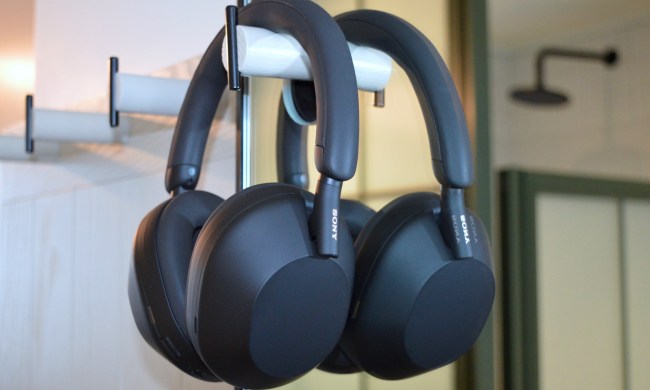Welcome to Digital Trends’ weekly recap of the revolutionary technology powering, connecting, and now driving next-gen electric vehicles.
Buckle up, folks — this week we’re taking off with a look at the futuristic dream of flying electric cars possibly gliding above U.S. roads sooner than you think. But before we get carried away, let’s bring it back down to the bumpy road of present-day realities.
Even if you’re mostly interested about the tech powering the electric vehicle (EV) revolution, it’s become increasingly hard to avoid the politics around it: You guessed it, we’re talking about this week’s public feud between Tesla CEO Elon Musk and U.S. President Donald Trump.
What does this have to do with EV tech? Well, quite a lot actually. For starters, the technology behind Tesla’s Autopilot and Full-Self Driving (FSD) modes may return in the crosshairs of regulators: Despite the names, these are still driver-assist features that require active driver supervision, and until Trump’s election, they had been under heavy scrutiny by safety regulators for several years.
Last year, the National Highway Traffic Safety Administration (NHTSA) launched an investigation into 2.4 million Tesla vehicles equipped with FSD. Big questions remain about the driver-assist system's performance under adverse, yet naturally-occurring conditions such as fog, sun glare, rain, and snow.
When Musk, who spent about $275 million to help elect Trump, was appointed to head a newly-created Department of Government Efficiency (DOGE), it raised more than a few eyebrows about his power and influence over the regulators who are supposed to oversee traffic safety, and therefore Tesla.
It didn’t help that the Trump administration followed Musk’s recommendations and relaxed crash-reporting requirements put in place since 2021, while also relaxing rules to accelerate the deployment of fully-automated robotaxis.
The Trump/Musk clash takes place just as Tesla is due to launch its robotaxi pilot progam in Texas later this month. While Trump is now threatening to pull billions of dollars in government subsidies and contracts from Musk’s companies, it’s unclear whether he might pressure the Department of Transportation to again tighten the regulatory screws on Tesla. What is clear is that Trump has never been a fan of electric vehicles and is already trying to end federal subsidies on EV purchases and leases. And while he had made a big deal about buying a bright red Tesla Model S back in March, Trump now says he wants to sell it.
Back to the tech
Meanwhile, Tesla is still required to respond to information and data requests from NHTSA regarding the safety of its robotaxis by July 1. And ultimately, it should come down to the performance of the technology.
For Autopilot and FSD, Tesla has opted for less expensive navigational tech relying on multiple onboard cameras that feed AI machine-learning models. But especially for so-called adverse driving conditions, it’s the more expensive technology relying on a blend of pre-mapped roads, sensors, cameras, radar, and lidar (a laser-light radar) which has received the nod of regulators.
Waymo, the sole robotaxi service currently operating in the U.S., and Zoox, Amazon’s upcoming robotaxi service, both use that blend of navigational tech.
For its robotaxis, Tesla is said to have upped its game in terms of autonomous driving with its Hardware 4 (HW4) technology, which does include radar sensors and promises enhanced environmental perception.
Will that be enough for Tesla to convince regulators, catch up with Waymo, or compete effectively with Zoox?
We’ll have to wait and see.
Flying cars
In a recent edition, we noted that while consumer confidence about robotaxi technology is on the rise, most people also want more data before they hop into a self-driving vehicle.
What about flying taxis? According to a recent survey by Honeywell, nearly all U.S. airline fliers, or 98%, said they would consider using a so-called electric vertical take-off and landing vehicle, or eVTOL, as part of their travel journey.
But while the buzz around flying electric vehicles has mostly focused on air taxis— like Archer Aviation’s Midnight, expected to fly athletes around the 2028 LA Olympics, or Joby’s slick air taxi, backed by Toyota — one California startup is shooting for something a little more... driveable.
Meet Alef Aeronautics, a Bay Area company that wants to put the “car” back in “flying car.” This week, Alef announced it has received over 3,400 pre-orders for its electric flying vehicle, the Model A — and get this: it’s not a futuristic prototype gathering dust in a lab. Alef says production could begin by the end of 2025, or early next year.
On the ground, the Model A operates like a low-speed electric car, complete with hub motors in the wheels and—wait for it—a real steering wheel. You can legally drive it at up to 25 mph on public roads, parking it in a normal garage like any other EV. It’s refreshingly manual in an increasingly hands-free world.
But when it's time for lift off, the steering wheel takes a backseat. For vertical takeoff and flight, the Model A transforms into a drone-like aircraft. Its cabin rotates sideways to create lift, and eight electric rotors—controlled by a flight system and joysticks—take over. No pedals, no yoke, just a bit of joystick magic (or autopilot, if you prefer).
The Model A has already received the nod from regulators for test flights.
While the $300,000 price tag won’t fit everyone’s budget, the company is clearly betting on a future where you don’t have to choose between a car and a flying machine—you can have both.


